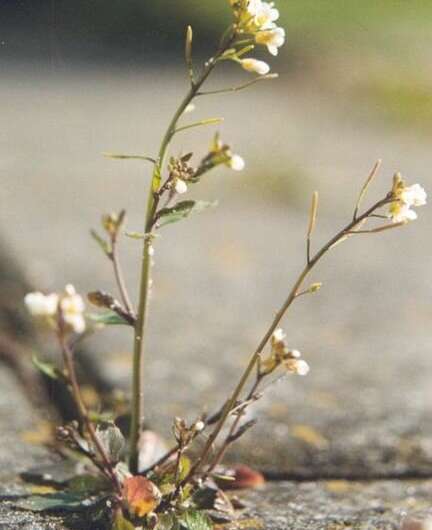Plant immunity cut to size

An international team based in Ghent, Belgium (VIB-UGent Center for Plant Systems Biology) and Basel, Switzerland (University of Basel), found a link between a class of enzymes and immune signals that is rapidly triggered upon physical damage in plants. This new discovery will increase the understanding of the plant immune system, and might be exploited to improve crop health and yield in the future.
As a universal process in all multicellular organisms including humans and plants, damaged cells send out signals to alert the surrounding tissue to the wound. These signals can activate the immune system to prevent infection and promote tissue regeneration, eventually leading to wound healing. In plants, short protein fragments or peptides play an important role in the immune system. These peptides are produced from precursor proteins that are cut into shape by so-called proteolytic enzymes or proteases.
The problem is that there are a lot of proteases, which means that it is essential to identify which ones perform which roles in the plant immune system. By wounding leaves of the thale cress (Arabidopsis thaliana), the teams of Thomas Boller (Prof. emeritus, University of Basel), Frank Van Breusegem (VIB-UGent Center for Plant Systems Biology) and Kris Gevaert (VIB-UGent Center for Medical Biotechnology) found that a class of proteolytic enzymes called metacaspases play an important role in the plant's response, which involves the release of calcium and the peptide precursor protein PROPEP1. They checked their findings by producing a plant with a mutation in the gene coding for an important metacaspase. This plant was unable to release the immune signal.
To understand the speed and extent of the immune response in Arabidopsis, Simon Stael, the postdoc who led the efforts, damaged the roots with lasers. The targeted plant cells responded quickly. Simon Stael says, "We were really excited to see those first laser shots followed by calcium waves and PROPEP1 signal dispersion." The newly uncovered process can be summarized as follows: Damage elicits high calcium levels in the cell interior that activate metacaspases. These metacaspases go to work on PROPEP1, which regulates the immune response and associated damage limitation efforts.
This opens up new avenues of research, since proteases usually cleave more than one protein. So which other plant processes are influenced by metacaspases and contribute to wound response and immunity? Researchers can use the laser ablation technique to look at a variety of other responses in the damaged cells and their surroundings to learn more about the details of local wound response.
Finally, crop breeding strategies mostly select for optimal growth, yield and quality of food or feed in combination with intensive pesticide use, potentially crippling the plant immune system. Metacaspases now emerge as potential targets for improved breeding techniques and better crop immunity.
The study paper, "Damage on plants activates Ca2+-dependent metacaspases for release of immunomodulatory peptides," is published in Science.
More information: Damage on plants activates Ca2+-dependent metacaspases for release of immunomodulatory peptides. Science science.sciencemag.org/cgi/doi … 1126/science.aar7486
Journal information: Science
Provided by VIB (the Flanders Institute for Biotechnology)

















